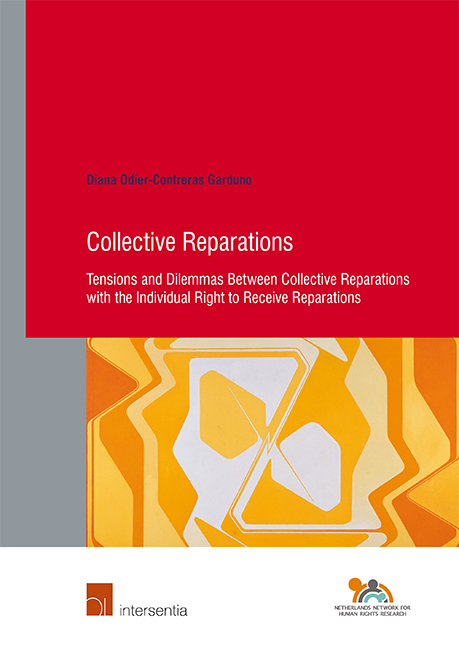 Collective Reparations
Collective Reparations Published online by Cambridge University Press: 31 January 2019
Introduction
Collective reparations first emerged within the context of societies in transition: societies that have experienced either severe (internal) violent conflicts or authoritarian regimes that produced grave violations of human rights (GVHR) such as those that are protected under international human rights law and, in some cases, under international humanitarian law. These societies strive to deal with those past legacies while moving forward towards more democratic orders. Although Tomuschat has submitted that in ‘any process of transitional justice, the primary goal must be to re-establish security and respect for human rights as a matter of collective reparation’, thereby reducing reparations to the democratic ‘transition itself’, societies usually seek to provide reparations to the victims of past crimes through reparation programmes to facilitate such a transition and to bolster reconciliation processes.
Reparations have become a ‘leading response’ in transitional justice processes (TJPs), because they convey a message that the harm suffered is acknowledged and an attempt is being made to make amends for this harm. Their importance is underscored by the fact that even the involvement of the United Nations Security Council (UNSC) in post-conflict situations includes the establishment of a sui generis mechanism of collective claims programmes to contribute to reconciliation.
Although not necessarily exclusively, reparations as part of a TJP consist of collective reparations and most commonly focus on providing in-kind benefits such as medical or educational services as well as symbolic and satisfaction measures including apologies, monuments, or minimal financial awards. Reparations are usually demanded or established by Truth and Reconciliation Commissions (TRCs), but they can also emerge from national initiatives, often demanded by civil society. Alternatively, they may be provided by different non-judicial bodies.
This chapter will provide a comparative analysis of collective reparations as part of transitional justice mechanisms, with the aim of identifying similarities and differences among the substantive and procedural aspects of those reparations recommended or designed by different non-judicial bodies. The chapter commences by providing a definition of transitional justice and its most common mechanisms, as well as by commenting on the emergence of collective reparation programmes. Next, in-depth case studies will be discussed regarding the collective reparations recommended by the TRCs in Peru and Morocco. Both TRCs were a response to victims from oppressive government regimes and internal armed conflicts.
To save this book to your Kindle, first ensure [email protected] is added to your Approved Personal Document E-mail List under your Personal Document Settings on the Manage Your Content and Devices page of your Amazon account. Then enter the ‘name’ part of your Kindle email address below. Find out more about saving to your Kindle.
Note you can select to save to either the @free.kindle.com or @kindle.com variations. ‘@free.kindle.com’ emails are free but can only be saved to your device when it is connected to wi-fi. ‘@kindle.com’ emails can be delivered even when you are not connected to wi-fi, but note that service fees apply.
Find out more about the Kindle Personal Document Service.
To save content items to your account, please confirm that you agree to abide by our usage policies. If this is the first time you use this feature, you will be asked to authorise Cambridge Core to connect with your account. Find out more about saving content to Dropbox.
To save content items to your account, please confirm that you agree to abide by our usage policies. If this is the first time you use this feature, you will be asked to authorise Cambridge Core to connect with your account. Find out more about saving content to Google Drive.